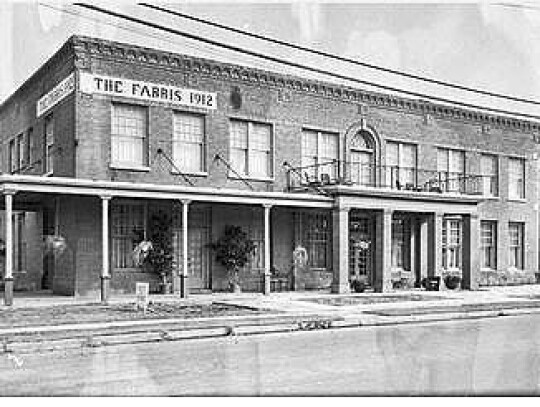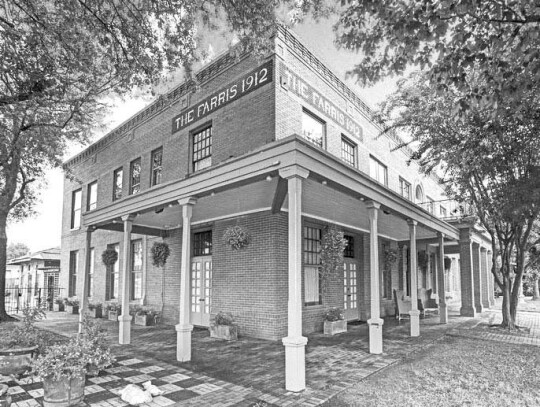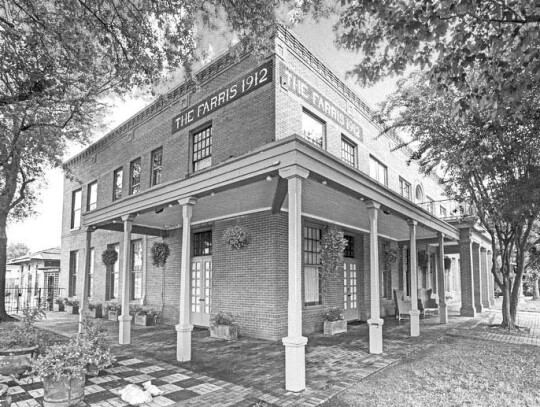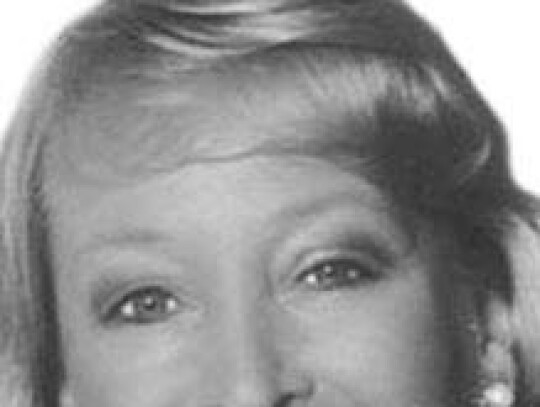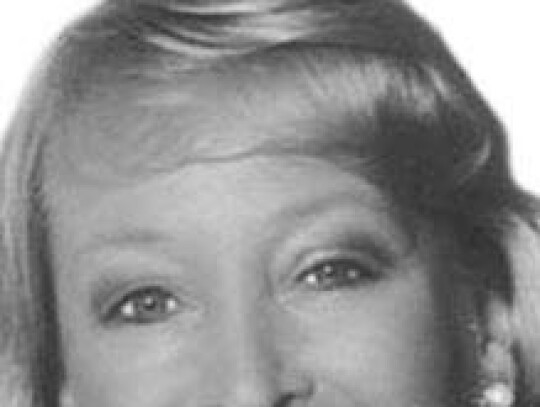Eagle Lake Remembers
Dust was gathering in the distance. The Texas sun shone brightly across the local prairies. The water rippled along the treelined shores of Eagle Lake, behind the approaching horses and wagons. The riders and drivers were exhausted from hard travel. In the days of early Texas and Colorado County settlements, lodging while traveling was done by camping under a tree grove or by the good fortune of a night with a neighborly family, or with the horses in their barn.
There were few stagecoach stops along the way. Not all had overnight accommodations. Some travelers came in covered wagons and used them for sleeping along the trail. For many, the sky and stars were their rooftops.
The truth is, distances were great between larger towns, such as the trail between San Antonio and Harrisburg (now Houston) or Galveston. The travel time was made even greater by slow-moving wagons. When immigrant settlers came in to Indianola to make their oxcart and walking treks across Texas to the Hill Country, the mesquite trees, clouds and starry nights were their only cover. The hard, Texas ground was their bed.
Hotels were slowly finding their way from sleeping spaces on floors of log cabins, to the first primitive wooden rooms where riders could hang their hats. On these trails were the first sleeping houses, stagecoach stops, and early hotels for the weary traveler.
Gamaliel Good, who had the first local stagecoach stop at the Lakeside area, had a small log cabin which accommodated travelers overnight in crowded conditions. Later, Good and his son William built the first hotel in Eagle Lake near the depot, as the first train bed near Eagle Lake was being finished in 1859. Many passers-through, railroad officials, drummers (salesmen) and early settlers used the hotel as a brief stop or as their home until they were settled in the area.
Some of Eagle Lake’s most prominent citizens made their temporary homes at the old hotel. Dr. Jaquelin Smith Bruce, Captain William Dunovant, Captain J.W. McCarty and wife Letitia Madeleine McCarty, the Goods and others were there in the 1870s. One could get both room and board at the Good Hotel.
The old hotel, although a welcome sight, was quite crudely constructed of flat boards nailed to a wooden frame often with large spaces in between. The hotel first served as a stage stop on the present corner of McCarty and Post Office Streets where the Dallas Hotel was later built.
The Dallas Hotel brick building remains today. It was also the Ramsey Hotel and the Farris 1912 Hotel. The building is still named the Farris 1912, today. It was long a center of Eagle Lake lodging, hunting, and social activity after being restored to its historical prominence by Helyn and Bill Farris of Eagle Lake.
The Good Hotel, the first hotel, built in the 1850s, was operated by Will and Phoebe Good until his death in 1878. Mrs. Phoebe Good continued to operate the hotel until her death in 1906. Although the old hotel was somewhat dilapidated, Mrs. Good was known to be generous in taking in people who lacked money, and who were in need of food and shelter. She was known to have taken in families and children, who often traveled by wagon, exhausted by the long rides.
She would gather supplies through donations from townspeople to give to the weary traveling families before they departed the hotel to aid them in their continued travel. Some said she was the local precursor to the “Traveler’s Aid Society.”
Mr. W.A. Dallas bought the old Good Hotel in 1906 from Mrs. Good’s estate. Dallas was an official with the San Antonio-Aransas Pass Railroad. He came to Eagle Lake in 1891, and married Miss Georgia Zeigler. Georgia was the daughter of Eagle Lake’s well-known Captain George Zeigler, and granddaughter of the wellknown Dilue Rose Harris from Eagle Lake and Columbus.
Mr. Dallas tore down the old wooden Good Hotel and constructed the new brick Dallas Hotel on its site, which was to become among the most beautiful and up-to-date hotels. The hotel went from Good to best between Houston and San Antonio.
The old Good Hotel served as a place of rendezvous for people who came in from the country to have a meal and exchange stories and news. With railroad employees coming and going, they brought additional news from ‘outside.’ With newspapers scarce, conversations were even more important for learning the latest news and information. This was the only way news could be found. The saloon was the other ‘news mill;’ but after a drink or two, news from the ‘bar’ wasn’t so reliable.
The old hotel, according to the memory of Dr. Jaquelin Bruce, “didn’t possess much architectural beauty.” The wall planks “allowed for plenty of ventilation.” They were not close-fitted.
Eagle Lake’s landmark, the colorful but simple Good Hotel, paved the way for the town’s beginnings. It made it possible for settlers, drummers, families, railroad men, and travelers to find a friendly place to rest. It nourished not only the traveler, but also the birth of a town.
The original Good Hotel became even better in its future with the Dallas, Ramsey, and Farris 1912 Hotels rising from its roots in Eagle Lake and Colorado County. The Farris 1912, now up for sale, provides still another opportunity for the next phase of the hotel’s future to materialize, carrying with it the roots of Texas history for 165 years.
.jpg)

